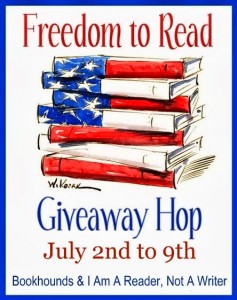 Welcome to my blog! The week of 2 July – 9 July, I’m participating with more than one hundred other bloggers in the “Freedom to Read” giveaway hop, accessed by clicking on the logo at the left. All blogs listed in this hop offer book-related giveaways, and we’re all linked, so you can easily hop from one giveaway to another. But here on my blog, I’m posting a week of Relevant History essays, each one focused on some facet of the American War of Independence. To find out how to qualify for the giveaways on my blog, read through each day’s Relevant History post below and follow the directions. Then click on the Freedom Hop logo so you can move along to another blog. Enjoy!
Welcome to my blog! The week of 2 July – 9 July, I’m participating with more than one hundred other bloggers in the “Freedom to Read” giveaway hop, accessed by clicking on the logo at the left. All blogs listed in this hop offer book-related giveaways, and we’re all linked, so you can easily hop from one giveaway to another. But here on my blog, I’m posting a week of Relevant History essays, each one focused on some facet of the American War of Independence. To find out how to qualify for the giveaways on my blog, read through each day’s Relevant History post below and follow the directions. Then click on the Freedom Hop logo so you can move along to another blog. Enjoy!
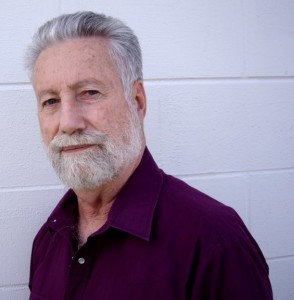 Relevant History welcomes Jack Parker, who was born in Pennsylvania, raised in Delaware, and has lived in Virginia, California, Colorado, and South Carolina. He earned a Bachelors Degree in Education and served four years in the U.S. Navy as an Asst. Navigator aboard the USS Spiegel Grove, then as Navigator and Executive Officer aboard the USS Pitkin County. After leaving the Navy, he moved to Colorado, rode and packed horses into the Gunnison Wilderness Area. He then spent five years living aboard a 43-foot yawl home ported in Charleston, SC, and taught several people to sail and live on the water. For more information, and to purchase Parker’s Guide to the Revolutionary War in South Carolina, check his web site.
Relevant History welcomes Jack Parker, who was born in Pennsylvania, raised in Delaware, and has lived in Virginia, California, Colorado, and South Carolina. He earned a Bachelors Degree in Education and served four years in the U.S. Navy as an Asst. Navigator aboard the USS Spiegel Grove, then as Navigator and Executive Officer aboard the USS Pitkin County. After leaving the Navy, he moved to Colorado, rode and packed horses into the Gunnison Wilderness Area. He then spent five years living aboard a 43-foot yawl home ported in Charleston, SC, and taught several people to sail and live on the water. For more information, and to purchase Parker’s Guide to the Revolutionary War in South Carolina, check his web site.
*****
South Carolina was a leader in the Revolutionary War with many battles, skirmishes and murders. Parker’s Guide to the Revolutionary War in South Carolina was written to put the location with the “what happened there” for the actions in South Carolina, to educate those that believe the war was fought and won in the north. South Carolina was in the forefront of the war and the founding of our nation from the beginning.
The second edition of Parker’s Guide is the most complete publication on the Revolutionary War in South Carolina. The little-known events of the war in South Carolina are related here to inform everyone about the contribution of South Carolina in winning the Revolution.
One issue dividing the colonies from their motherland was that the British government required tax stamps for imported goods. On 18 October 1765, the ship Planters Adventure delivered the stamps to Fort Johnson, on James Island, where they were stored. The HMS Speedwell was stationed close to the fort on 23 October to deter an angry mob of citizens from Charleston. Two days later, the mob boarded the Carolina Packet that was thought to be carrying more stamps and the stamp officer, Mr. George Saxby, but he was not due until the next day. On 26 October, the Heart of Oak (built in Mt. Pleasant, SC) sailed into the harbor with Mr. Saxby aboard. That night, 150 volunteers from Charleston, commanded by Col. Daniel Stevens, captured twelve guards and a sergeant and took over the fort with the stamps. Upon the Speedwell sighting the “Liberty” flag of Patriot Christopher Gadsden instead of that of the British, a party was sent to the fort, where they were told the stamps must be removed from the fort and the province or they would be burned. Believing the Americans would not be deterred, the Speedwell removed the stamps and sailed out of the harbor. This action is often overlooked because it is prior to the Revolution’s accepted starting date, but is significant since it relates to the stamp problems in New England.
A Patriot, Dr. John Haley, killed Peter DeLancey, a prominent New York Tory, in a duel at a Charleston tavern. Before and during the Revolution, many notable Charlestonians met to drink and discuss politics at McCrady’s Tavern. DeLancey came to Charleston in 1771 and may have been killed over politics or a woman. The reason for his killing is unknown.
Peter DeLancey was the son of New York Royal Lt. Gov. James DeLancey. The killing of Peter DeLancey in Charleston resulted in Loyalist Brig. Gen. Oliver DeLancey raising and commanding a provincial regiment (three battalions), known as DeLancey’s Brigade of light horse troops to fight the South Carolina Patriots in 1776.
In 1775, the arms stored in the attic of the State House by the British were seized by the Americans. This was the scene of the first significant incident of the Revolutionary War in South Carolina. This incident happened just two days after Patriots fired on the British at Lexington, Massachusetts.
The war was used as an excuse for robbery and violently settling disputes. The Harrison Brothers plundered the Patriots to enrich themselves with the blessing of the British forces. The Tories on Lynches Creek, in the vicinity of M’Callum’s Ferry, began their murders and depredations early in the war. Matthew Bradley, Thomas Bradley, and John Roberts, all respectable and upstanding citizens who had joined neither party, were murdered in their homes, possibly with some other members of the Salem Black River Presbyterian Church congregation. The three Harrison brothers joined the local Tories; John Harrison later became a major and Samuel became a captain of the “South Carolina Rangers” in the British provincial service. British Lt. Col. Banastre Tarleton called them “men of fortune.” They were three of the worst bandits of the area. Before the fall of Charleston to the British, they lived in a wretched log hut by the road near M’Callum’s Ferry over the Lynches Creek (River), just east of modern Bishopville, SC. As an example of the recriminations and civil war, the Americans killed Robert Harrison in his home. After the war was over, the major retired to Jamaica as a rich man with the wealth accumulated from looting Patriots’ homes and robbing his neighbors.
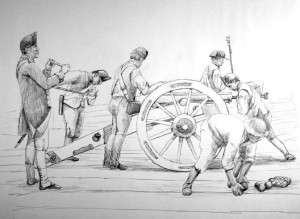 Within four months after Gen. Nathanael Greene’s return to South Carolina, his Southern Continental Army, with South Carolina, North Carolina, and Virginia state troops and militia, broke the British hold on the interior by eliminating the Crown’s posts one by one. American mounted detachments carried the war almost to the gates of Charleston. A decisive blow was dealt to the British on the battlefield at Eutaw Springs in September of 1781.
Within four months after Gen. Nathanael Greene’s return to South Carolina, his Southern Continental Army, with South Carolina, North Carolina, and Virginia state troops and militia, broke the British hold on the interior by eliminating the Crown’s posts one by one. American mounted detachments carried the war almost to the gates of Charleston. A decisive blow was dealt to the British on the battlefield at Eutaw Springs in September of 1781.
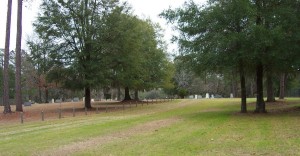 Eutaw Springs was essentially a draw, but the battle was both a material and moral victory for the Americans. The British suffered such heavy losses that they could no longer exert control beyond Charleston and its immediate environs. The British troops at Eutaw Springs were to reinforce Lord Cornwallis at Yorktown, but because of their heavy losses in this battle, they retreated to Moncks Corner and to White’s Meeting House (Dorchester County) to recover. Since the British in the Battle of Eutaw Springs were unable to reinforce Cornwallis, he was defeated.
Eutaw Springs was essentially a draw, but the battle was both a material and moral victory for the Americans. The British suffered such heavy losses that they could no longer exert control beyond Charleston and its immediate environs. The British troops at Eutaw Springs were to reinforce Lord Cornwallis at Yorktown, but because of their heavy losses in this battle, they retreated to Moncks Corner and to White’s Meeting House (Dorchester County) to recover. Since the British in the Battle of Eutaw Springs were unable to reinforce Cornwallis, he was defeated.
The war in South Carolina did not end with the surrender of Cornwallis, but continued until September 1783. It is generally thought that the War in SC ended when the British withdrew from Charlestown in December 1782, but there were some murders and retributions thereafter. The final act of revenge for the war was carried out in 1807 with the shooting of “Ned Turner,” one of William “Bloody Bill” Cunningham’s right hand men, by John and William, sons of Stokely Towles who was killed by Ned Turner on 18 November 1781.
*****
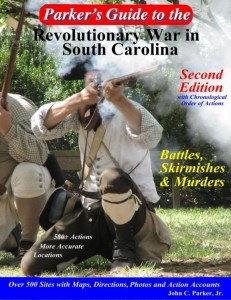 A big thanks to Jack Parker. He’ll provide a $10.00 discount certificate toward the purchase of a copy of Parker’s Guide to the Revolutionary War in South Carolina for someone who contributes a legitimate comment on this post today or tomorrow. Delivery is available worldwide. Make sure you include your email address. I’ll choose one winner from among those who comment on this post by Wednesday 9 July at 6 p.m. ET, then publish the name of all drawing winners on my blog the week of 14 July. And anyone who comments on this post by the 9 July deadline will also be entered in the drawing to win a copy of one of my five books, the winner’s choice of title and format (trade paperback or ebook).
A big thanks to Jack Parker. He’ll provide a $10.00 discount certificate toward the purchase of a copy of Parker’s Guide to the Revolutionary War in South Carolina for someone who contributes a legitimate comment on this post today or tomorrow. Delivery is available worldwide. Make sure you include your email address. I’ll choose one winner from among those who comment on this post by Wednesday 9 July at 6 p.m. ET, then publish the name of all drawing winners on my blog the week of 14 July. And anyone who comments on this post by the 9 July deadline will also be entered in the drawing to win a copy of one of my five books, the winner’s choice of title and format (trade paperback or ebook).
**********
Did you like what you read? Learn about downloads, discounts, and special offers from Relevant History authors and Suzanne Adair. Subscribe to Suzanne’s free newsletter.


